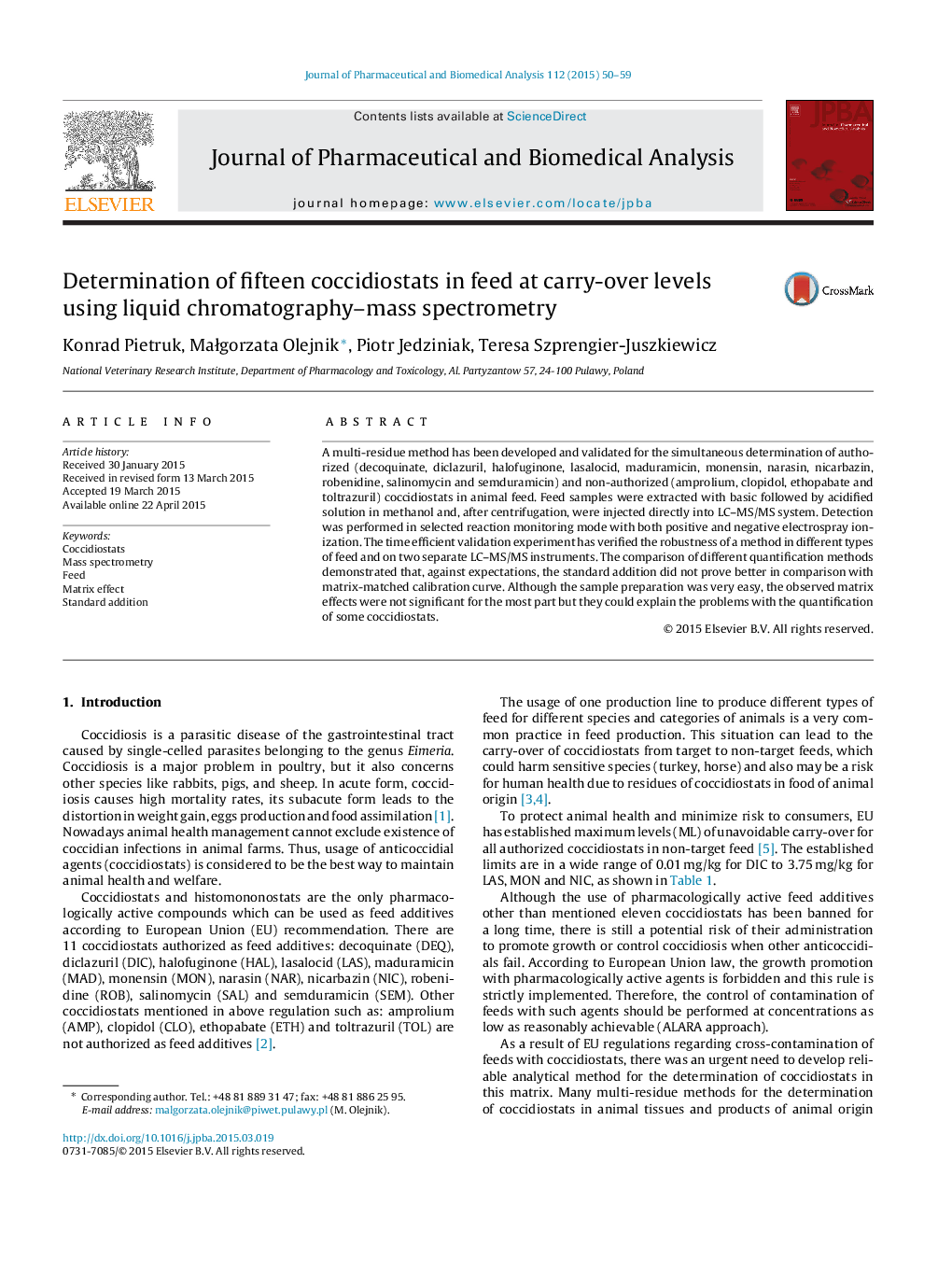| Article ID | Journal | Published Year | Pages | File Type |
|---|---|---|---|---|
| 1220734 | Journal of Pharmaceutical and Biomedical Analysis | 2015 | 10 Pages |
•Fifteen coccidiostats were determined at carry-over levels in feed using LC–MS/MS.•The method and proposed validation scheme are straightforward and time-effective.•The method is applicable to different types of feed.•Standard addition method does not always improve the reliability of results.•Matrix effect can be minimized by simply reducing the amount of injected matrix.
A multi-residue method has been developed and validated for the simultaneous determination of authorized (decoquinate, diclazuril, halofuginone, lasalocid, maduramicin, monensin, narasin, nicarbazin, robenidine, salinomycin and semduramicin) and non-authorized (amprolium, clopidol, ethopabate and toltrazuril) coccidiostats in animal feed. Feed samples were extracted with basic followed by acidified solution in methanol and, after centrifugation, were injected directly into LC–MS/MS system. Detection was performed in selected reaction monitoring mode with both positive and negative electrospray ionization. The time efficient validation experiment has verified the robustness of a method in different types of feed and on two separate LC–MS/MS instruments. The comparison of different quantification methods demonstrated that, against expectations, the standard addition did not prove better in comparison with matrix-matched calibration curve. Although the sample preparation was very easy, the observed matrix effects were not significant for the most part but they could explain the problems with the quantification of some coccidiostats.
Graphical abstractFigure optionsDownload full-size imageDownload as PowerPoint slide
